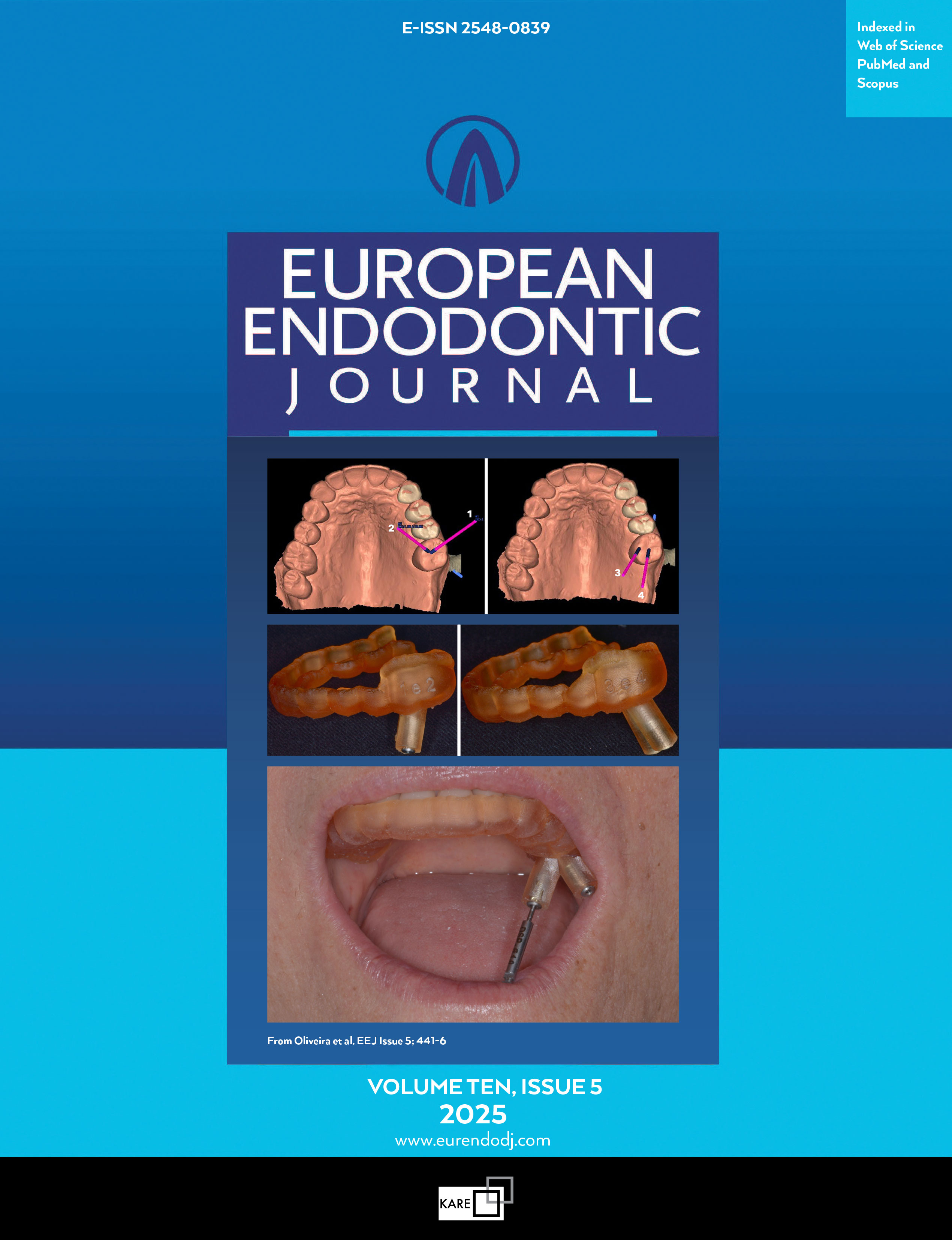Metrics
2024 IMPACT FACTOR
5 year Impact Factor
Eigenfactor Score
2024 CiteScore
Journal Citation Reports
(Clarivate 2025, JIF Rank)
Effects of Different Cementation Systems on Pull-out Bond Strength of Fibre Post to Bioceramic Putty Using a 3D Prefabricated Root Canal Model of Immature Permanent Teeth: An In-Vitro Study
Yasser Alsayed Tolibah1, Mohammed Kheir Awad2, Yasser Munther Najjar3, Mohammad Tamer Abbara4, MHD Bashier Almonakel1, Jihad Abou Nassar5, Osama Aljabban4, Nada Bshara11Department of Pediatric Dentistry, Faculty of Dentistry, Damascus University, Damascus, Syria2Department of Restorative Dentistry, Faculty of Dentistry, Damascus University, Damascus, Syria
3Department of Orthodontics, Faculty of Dentistry, Damascus University, Damascus, Syria
4Department of Endodontics, Faculty of Dentistry, Damascus University, Damascus, Syria
5Department of Fixed Prosthodontics, Faculty of Dentistry, Damascus University, Damascus, Syria
Objective: The current study aimed to find the best cementation system for cementing the fibre post with BioCeramic putty: total-etch dual-cure hydrophobic resin cement (TC), Self-adhesive dual-cure hydrophilic resin cement (SC), with SC-modified with a bioceramic sealer (SCB), and glass ionomer cement (GIC).
Methods: An impression was captured from the immature premolar root canal, followed by scanning and the subsequent design of prefabricated root canal models for immature permanent teeth (PRCMs). A total of forty PRCM replicas were precision-printed using advanced 3D printing technology. Subsequently, etch PRCM underwent meticulous filling with BioCeramic putty and a fibre post. After two hours, the fibre posts were removed and treated with hydrofluoric acid for all groups. Subsequently, fibre posts of groups except the GIC group received silane solution application. The PRCMs were categorised into four groups based on the cementation system employed: TC Group (n=10), SC Group (n=10), SCB Group (n=10), and GIC Group (n=10). After 48 h, the specimens underwent pull-out strength testing using a universal testing machine, performed along an axis parallel to the longitudinal axis of the fibre post at a crosshead speed of 1 mm/min. Failure modes were scrutinised using a stereomicroscope. The acquired data were subjected to robust statistical analyses, employing one-way ANOVA and Tukey HSD tests with a significance level set at α=0.05.
Results: The One-way ANOVA test showed a significant difference in the pull-out bond strength of the groups (p<0.001). Accordingly, the Tukey HSD test revealed that the mean bond strength values were significantly higher in the TC group than in other groups. Adhesive failure had a higher frequency in SC and GIC groups, whereas mixed failure had a higher frequency in TC groups and 3.
Conclusion: The TC exhibited significantly superior bond strength to the other groups, particularly concerning the fibre post-cementation to BioCeramic putty. (EEJ-2024-06-094)
Manuscript Language: English
(374 downloaded)


